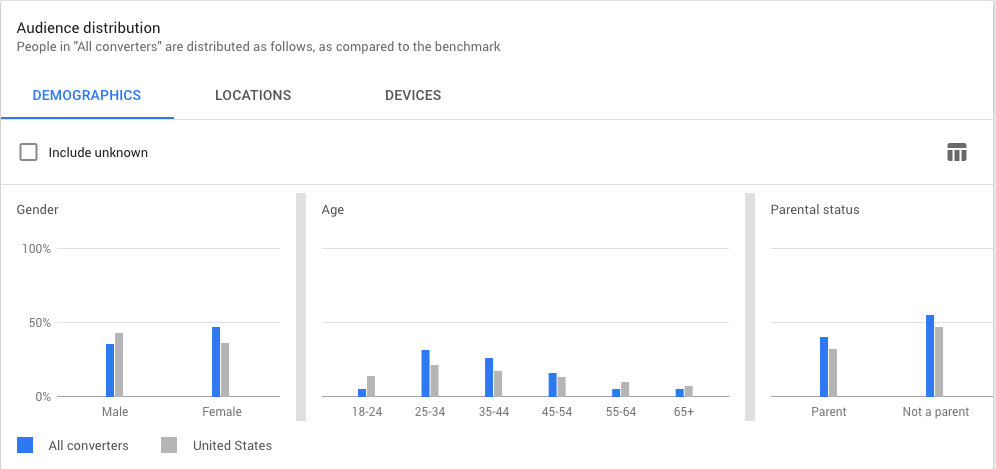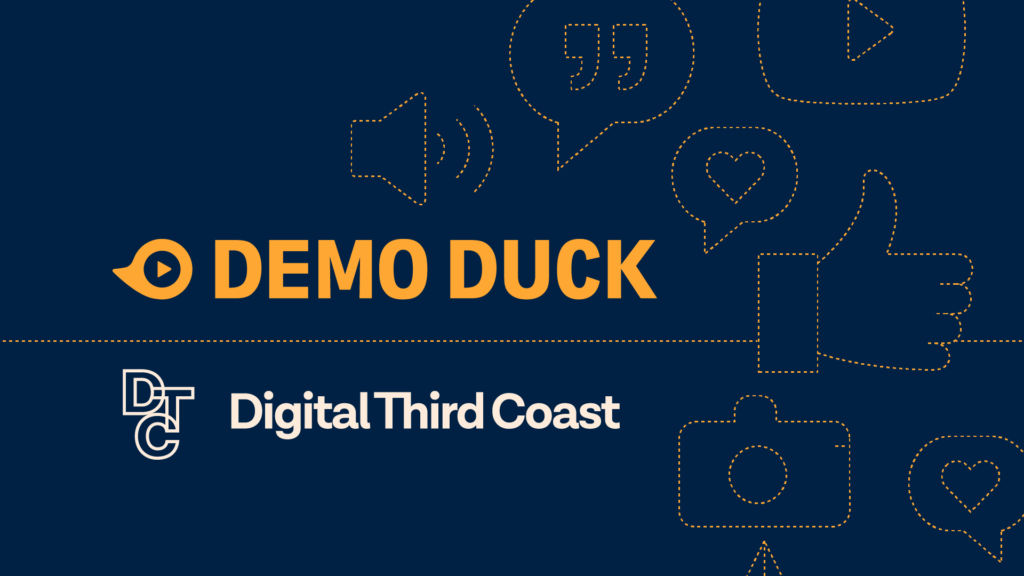Earlier this year, Demo Duck teamed up with Digital Third Coast on a Video RFP. They impressed us with how they engaged with their clients in the paid media space, especially when it comes to online video ads. With more than 12 years of experience in SEO and paid media marketing, we knew their perspective on our digital video world be invaluable. So we thought, why not pay them a visit to learn more about digital video ad production and promotion? And we did. Check out the highlights of our conversation with Lyndsey Maddox, DTC’s Director of Business Development.
COLIN HOGAN: At Demo Duck, we focus on video production. Digital Third Coast helps businesses after production has wrapped. First thing we want to know—once a company has their finished video, how do they decide the best promo channel?
LYNDSEY MADDOX: The most important thing to consider is your goals for the video. Who do you want to see it? What do you want them to do once they have? Are they just watching or do you want them to click through to your website and take some sort of action?
Once you’ve defined these goals, you can start thinking about platforms, finding the audience you want to target, and how you want them to interact with your content. Good news is, video works across any number of search or social display platforms.
CH: There are so many different video promotion platforms out there. Let’s start with the two most popular platforms and their differences.
LM: There’s two major players when it comes to video advertising—YouTube and Facebook. Surprise! But there are some key questions to think about when choosing the right one for your business. What’s considered a view and how do they charge you? How will ads appear to users? And of course, how you define and target those users?
YouTube operates on a pay-per-view model. When a user watches 30 seconds of your video or takes any type of action, whichever comes first, it’s considered a view. Your video may feel like more of an interruption but if users watching your video with sound on is important to you, it’s much more likely to happen on YouTube. Then with targeting, you have to choose from predefined segments. For instance, you can target ages 25-34 but not anything more specific.

On Facebook, a view can range from two to ten seconds, or the whole video depending on what you select. The video will then be optimized to meet your set criteria. Videos appear directly in users’ feeds along with their other content for a more organic experience. And when it comes to targeting your audience, Facebook will let you select specific age ranges. Overall, Facebook let’s you get much more granular in how you serve your ad.
CH: At Demo Duck, we work with budgets of all sizes. We believe getting the most out of a video production budget means thinking long term but executing on the short term. Start with one video, invest in proper resources, and provide clients the most bang for their buck. On the video promotion side, how can someone make the most of their budget?
LM: To maximize your video promo budget, you need well-defined success metrics with the proper tracking in place to see if you’re reaching them. As the old saying goes—measure twice, cut once. You don’t have to waste money experimenting on ads that are already live. You can always opt for an A/B split test that lets you serve different video ads, or different CTAs on the video, within the same budget. Let the audience show you which one is resonating with them more. Then, you can continue to make changes and iterate over time to maximize your spend.
CH: On the production side, we work to figure out the common characteristics of a client’s most successful corporate video productions. When we’re creating a new video series or continuing to create more episodes within a series, we can tailor them around what already works. Since tracking is fundamental to getting the most out of your promotion, do you have any recommendations for tracking success and optimizing your plan?
LM: Like I said before, always define what metrics are most important to you. That could be views, click-throughs to your site, taking some sort of action on site or video shares. Define those metrics first. My favorite tools to use are Google Analytics and Google Tag Manager. They let you track all of these different events and actions and measure them over time.
CH: Say you’re unsure about whether promotion will work for you. Speaking from experience, what’s the right amount to invest—whether it’s time, resources or money— to get quality results. Basically, how can you avoid feeling like you didn’t do enough?
LM: That’s a great question. To get statistically significant data, you often need to spend so much time and money that unless you have a huge audience and a huge budget, it’s just not worth it. But if you use A/B testing, you can use a minimum viable data model, and look at basic metrics like impressions, views and clicks of two different video options, helping you quickly understand what’s working best. This will help you accelerate the testing time, conclude tests more quickly, and make decisions in a more iterative way.
CH: That’s one way to make the most of a limited budget. Do you have any other paid video marketing hacks?
LM: Tons! I will say, your best bet will always be focusing on making sure you’re targeting the right audience, using the tools we’ve discussed to learn as much as possible and then building your plan around that. That said, let’s look at how YouTube charges for video promotions. For example, there’s plenty of hack and tricks about how long your video should be. Some say you should create a video that times out early so people are forced to press skip—then you won’t have to pay for the view. There’s plenty you can test and play with. But more important than hacking the system is understanding the content you have and who you want to get it in front of.
CH: When The Daily Show was switching hosts, they created SEO, Google, and YouTube ads around key phrases people were searching for. So, if you searched “Trevor Noah girlfriend”, you’d get paid video of Trevor at his desk asking, “Why are you looking about my personal life? By the way, check out our show at 11 o’clock.” We loved how it injected a dose of personality into the intro to the new brand. Do you have a favorite paid digital campaign?
LM: My favorite paid video ads have to be the GEICO commercials from a few years ago on YouTube. They made videos where the action was done within seconds and the actors would freeze with a voice over of “You can’t skip this ad because it’s already over.” Not only is it hilarious, it’s spot on for the channel and the brand. As an audience member, you know you’re being disrupted with an ad and you’re ready to click skip. Playing with that and being self-aware presents a really positive, honest brand image for GEICO.
CH: That’s one of the things we enjoy most about paid ad production, you can have a lot of fun with it. You can be self-aware like some of the favorites we just mentioned. Or, going back to the time constraints of YouTube, leaning into those barriers and letting creativity run wild creates concepts that play to the specific audience or medium. Which in the end is much more memorable.
LM: It’s digital marketing, it should be fun!
